
How many times have I seen ‘Zulu Prince’ Cape daisy at the back of a seed catalog and thought, “Hmm, I should try that sometime”? But I always pass it up.
Well, this year I tried it, and it’s a great little annual.
I ordered this plant as Venidium fastuosum from Pinetree Garden Seeds, but after digging around on the interwebs, I think the correct current name is Arctotis fastuosa var. alba ‘Zulu Prince’. The species is commonly known as monarch-of-the-veldt or Cape daisy.
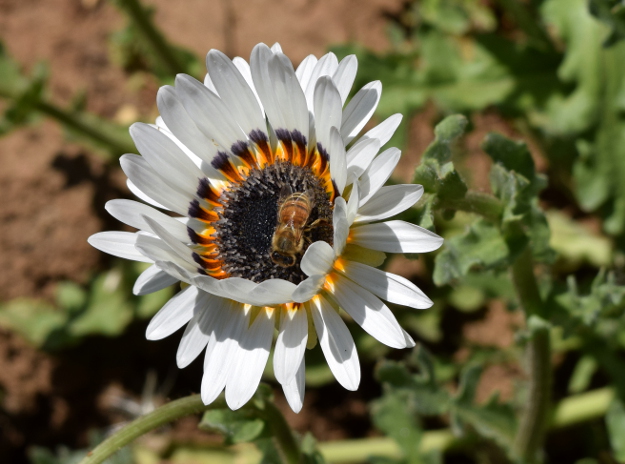
It’s attractive to bees, which make off with the pollen before the flowers close in late afternoon.

This is what they’re after—see that powdery white polleny goodness? The shiny dark blue things in the middle are disk flowers that haven’t opened yet.

Zulu Prince sets copious amounts of seed, so if you grow it once, you’ll never have to buy seed again. Daily deadheading greatly helps with the plant’s appearance, though, so you might want to let a few flowers go to seed and then deadhead the rest.

Cape daisy is in the aster family (Asteraceae), so when you remove the seeds from the seedhead, you see that cool fractal pattern, just like with sunflowers.
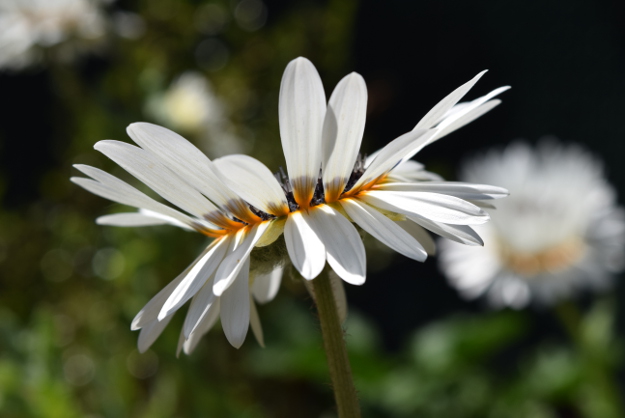
The ray petals are arranged in an alternating up-down fashion, which is distinctive and cute.

The stems are striped and make a nice color echo to the purple stems of Sedum ‘Matrona’.
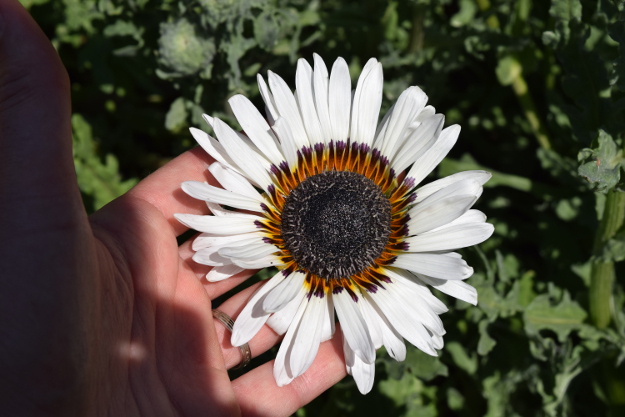
I have several plants that I raised from seed (indoors, under lights), and it’s interesting to note the diversity within the group. This plant has the biggest flowers—3 1/2 inches across; the smallest ones are 2 inches. Some plants are stocky and others are looser. And note how the orange and purple markings vary from flower…

to flower. I believe Arctotis fastuosa also comes in an orange-yellow model, but I like this white version. It’s as crisp and clean as freshly laundered linens hung out to dry.

Here’s a group shot. They’re not overwhelming in flower, but actually if they were more floriferous, they’d be a pain to deadhead. And to be fair these were planted late and had sat around in their cell packs for too long. They’ve filled out nicely.

This is a single plant that I planted earlier in the year. It’s about 2 ft. high and 2 ft.wide and there are usually 15-20 flowers blooming on it and 40 or 50 more buds waiting their turn.
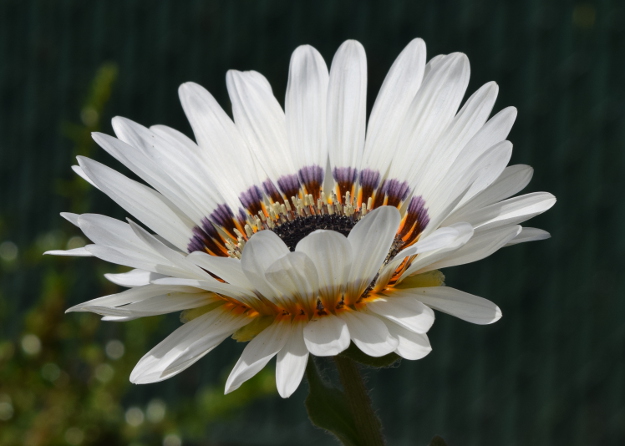
The flowers close in late afternoon and don’t open until mid-morning. They’re also closed on cloudy days, which is a bummer and which is probably why you don’t see more Cape daisies around.
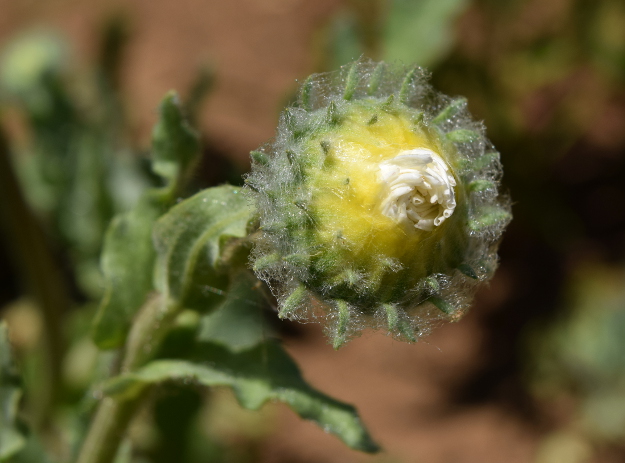
Zulu Prince is from South Africa, and like a lot of plants from South Africa, it seems to like our Portland climate. The leaves, stems, and buds are hairy and resinous, like those of many plants adapted to dry-summer climates. It probably wouldn’t be crazy about high humidity.

We’ve had 2 solid months of endless sunshine, no rain, and mostly low humidity, and my Cape daisies are fat and sassy. They’ve had very little supplemental irrigation, though I haven’t let them get bone dry.


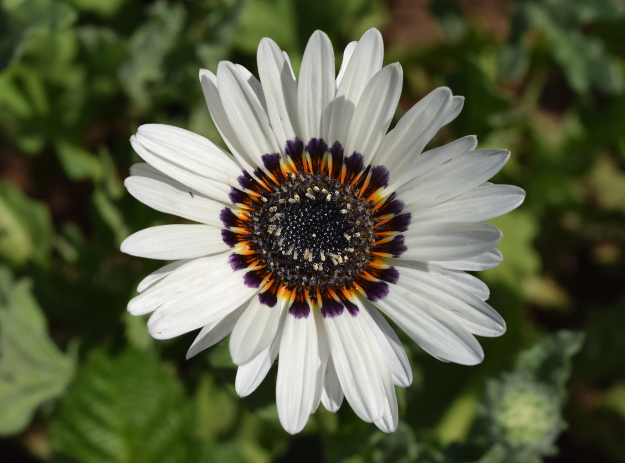
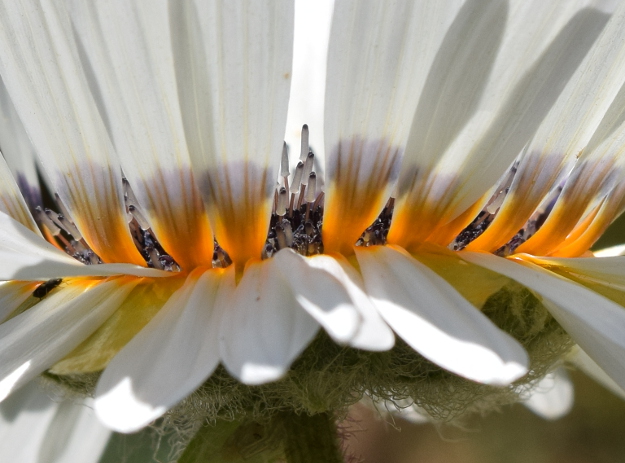

Is this lovely plant edible?
Hi Amy,
Thanks for all the information on Zulu Prince. I’ve started about six plants from seed that I ordered from Pine Tree as you suggested. Can they go in containers with other annuals or is it best to plant them in larger beds? They seem to spread. I’m assuming it if they close up at night or on an overcast day that they don’t make good cut flowers.
I live in Hood River. I’m hardening them off through April, but hoping to stick them outside by May. Does that sound about right?
Thanks and hope you are stay well and gardening a lot!
Polly
Polly, how did yours turn out? I am in central Oregon, and very curious about growing these. Thx!
Hi Karen,
I grew mine from seed in late February and they were ready for transplant in early May after hardening them off in April. It’s a totally rewarding plant but I suggest you plant them further in a flower bed instead of along the edge as their foliage degrades a bit over the summer. They will pop up a good couple of feet so you can enjoy the blooms among other perennials. You will need to dead head them after a while to make room for more blooms that just keep coming. I think their peak season is really Late May – July unless you are dogged with deadheading – I still have blooms in August but not as many. I found is that you can also use them as cut flowers in an arrangement even though they do close up at night. I am definitely going to grow them next year. I wouldn’t use them in containers unless they are in the middle with other plants around them. Too leggy. Also the size of the blooms diminish over the summer but are still very attractive.
Hi Amy,
Have you sown the seeds you harvested?
How did they turn out?
I’ve just read that the white flowers tend to revert to orange if grown from own seeds.
I ordered some seeds yesterday and will sow them next year. Regards.
Polly, how did yours turn out? I am in central Oregon, and very curious about growing these. Thx!
Any luck as a cut flower? Thanks!
Yes, as a cut flower they actually last several days, but they do close up at night. Cut them before their lovely black-metallic centers begin to shed yellow pollen. Their stems are kind of stinky and sticky but the dazzle they add to an arrangement is worth it.
Great intel, thank you!
Amy do you think the seeds from a particular flower would produce the same identical markings as the flower it came from or is there always variation?